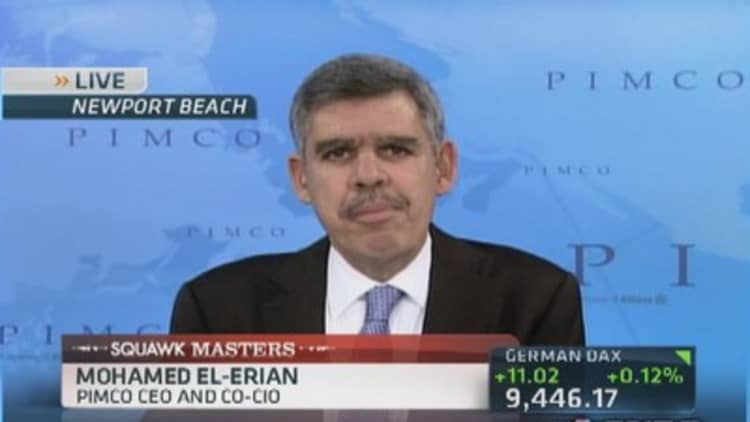The Federal Reserve will likely phase out its massive bond-buying stimulus this year if the U.S. economic recovery strengthens as expected, a top Fed official said on Tuesday, but it is still far from any thought of hiking interest rates.
With unemployment, at 7 percent, well above healthy levels and inflation undesirably low, the economy needs continued stimulus from the central bank, San Francisco Federal Reserve Bank President John Williams said in remarks prepared for delivery to the Arizona Bankers Association.
"I want to stress that scaling back on asset purchases is not a retreat from accommodative monetary policy,'' Williams said. "We're starting to ease off the gas, but we're nowhere near hitting the brakes yet.''
The Fed has kept short-term interest rates near zero for more than five years and has swollen its balance sheet to an unprecedented $4 trillion through a series of bond-buying programs. The Fed's asset purchases, known as quantitative easing, are aimed at lower borrowing costs to spur investment and hiring after the worst downturn in decades.
(Read more: )
Last month, amid unmistakable signs of a quickening recovery, the Fed took a first step toward dialing down that stimulus by trimming its $85 billion-a-month bond-buying program to $75 billion.

Fed Chairman Ben Bernanke, who is serving his final month as U.S. central bank chief before Vice Chair Janet Yellen takes the reins on Feb. 1, said the program would likely wind down in late 2014.
Williams—who was Yellen's research director at the San Francisco Fed until her promotion to Fed Vice Chair in 2010—reiterated the chairman's message in the context of a largely upbeat assessment of the recovery.
The U.S. economy will likely grow about 3 percent this year, up from a 2.5 percent pace last year, Williams said, fueled by a housing recovery that has been long in coming. With the recent budget deal in Washington, further significant spending cuts are unlikely, he said, and uncertainty is abating.
(Watch: Expect to wind down QE by Oct: HSBC)
Inflation, currently about half the Fed's 2-percent goal, has likely bottomed out and will move slowly back to target over the next few years, he said. Add to that the encouraging signs from the job market, he said, and the time was right to start moving Fed monetary policy back to normal by reducing its bond purchases.
"We will likely continue to reduce the pace of those purchases, and eventually eliminate them, over this year,'' said Williams, who does not vote on the Fed's monetary policy committee this year.
Even so, Williams said, the recovery still needs a boost. Reiterating the Fed's promise to keep rates low until "well past the time'' that unemployment falls to 6.5 percent, as long as inflation stays below the Fed's goal, Williams forecast rates would stay near zero for the "foreseeable future.''
"Things are definitely looking up,'' he said. "We're still not where the economy should be, but we're well on the road to recovery, and I see things getting better in the year ahead.''
—By Reuters

